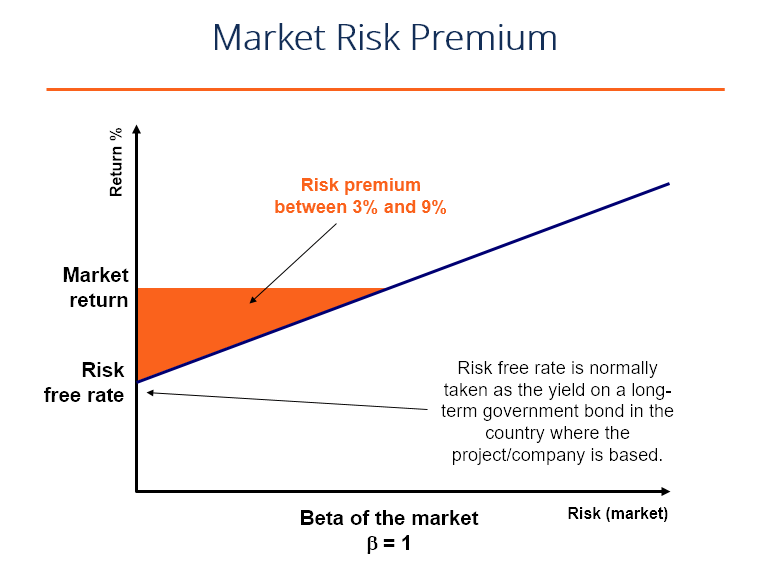
Lines of constant fractional intercept are diagonal in the plots presented by Muñoz-Darias et al. (2011) and vertical here. The RID and the HID do not have identical shapes (although the mapping between the two is very close). Some features are not present in both plots – for example, the RIDs for both GX 339−4 order rejected by rms and XTE J1550−564 show separate paths in the RID which are not apparent in the HID. In the case of GX 339−4, as described in Muñoz-Darias et al. (2011), the start of the outburst and return to quiescence are along separate paths in the RID (see Fig. 6) although they appear to merge as the source fades.

The flux-binned PSDs of long, bright observations which deviated significantly from a positive linear rms–flux correlation were inspected for any shape change over the course of the observation. In other cases it was apparent that the shape of the whole power spectrum was evolving with flux. No examples of non-linear or negatively correlated rms–flux relations were found within the sample that could not be explained by one of the above reasons. Where sufficient data are available and the variability is stationary, the rms–flux relation appears to be ubiquitous in the broad-band noise from BHBs.
The Accounting University with 3400+ Accounting contents as study material which can watch, read and learn anyone, anywhere.
The content and opinions expressed on this website are those of the authors and do not necessarily reflect the official policy or position of NT or any of its affiliates. The 1998 outburst of XTE J1550−564 is excluded from this data set due to the strong QPO; the 2004 outburst of GX 339−4 and 2005 outburst of XTE J1118+480 are mostly excluded as there are very few observations in the modes processed for this work. You would have had an experience of being blocked from buying or selling few options and futures contracts and be wondering why. Illiquid Options and futures are blocked as per Tradeplus’s internal Risk management policy in order to protect traders from been stuck with a position in the absence of counter parties to cover the same. For example if we allow to buy an illiquid contract, a client would be able to create a position in it by buying or selling the contract.
These shifts, which have in these cases still produced strong, positively correlated, linear rms–flux relations, demonstrate the importance of careful analysis of the power spectra when measuring the rms–flux relation. Small differences in the shape of the PSD, whilst not always drawing it away from linearity, may artificially alter the gradient and thus the intercept of the observed rms–flux relation. In general the data were found to agree with the assumed linear model, with the majority of discrepant observations due to data at low count rates and/or with low fractional rms. Assuming a background rate of approximately 7 counts s−1 PCU−1 and a count rate of 100 counts s−1 PCU−1, the fractional rms of the Poisson noise level is 2.14 per cent. Although this level drops rapidly as the count rate increases, a significant amount of power above the noise is required to satisfactorily measure the rms.
Trading and Markets
The most important single diagram currently in use for diagnosing and tracking the evolution of states is the hardness–intensity diagram (HID). The HID itself is a powerful tool based on only the source intensity (in a particular X-ray band) and a very crude indicator of the energy spectral shape, with no explicit dependence on timing properties. But as discussed in McClintock & Remillard (2006) and Belloni (2010) the timing properties of these objects evolve as clearly, if not more clearly than the energy spectral properties do.
Flynne moves to Mutual of Omaha reverse servicing division – ReverseMortgageDaily
Flynne moves to Mutual of Omaha reverse servicing division.
Posted: Mon, 30 Jan 2023 08:00:00 GMT [source]
4 we show an altered version of this new diagram – the rms–intensity diagram (RID) – the natural variability counterpart to the HID, which shows the intensity against fractional rms amplitude as discussed in Muñoz-Darias et al. (2011). The RID is of course very similar to the long-term rms–flux plot in Fig. 3, indeed it is simply a geometric transformation of that plot and contains the same information. Muñoz-Darias et al. (2011) clearly demonstrate that the position on the RID is related directly to the source state in GX 339−4. This demonstrates that variability is every bit as strong an indicator (or diagnostic) of outburst evolution and states as is the energy spectrum. The state of a source is usually identified based on a combination of its luminosity, timing properties (the power spectrum) and energy spectrum.
The ‘good’ observations are shown with red symbols, and black symbols indicate the data (mostly soft states) with rms below our threshold for rms–flux analysis. This is different from the prescription used by Gleissner et al. (2004). Their formula is only valid when the power is the same in all frequency bins, i.e. locally white noise. When this is not the case, e.g. when most of the power comes from a few dominant frequencies (strong power laws or peaked QPOs), both the power estimate and the variance on the power estimate are dominated by the frequencies that contribute the most power. One way to see this is to consider adding more frequencies that contribute negligible power to the sum.
Franchise Item Catalog Report
The power spectra in intermediate states can show dramatic changes in between observations, with QPOs and broad-band components changing in both frequency and amplitude. On longer time-scales there is not the equivalent stationarity in power spectral shapes observed within a single observation; therefore, the long-term relationship in these states is not representative of that observed on short time-scales. In contrast, evolution of the power spectra within the hard state occurs mainly below the 1–10 Hz range and although the shape does not remain completely stationary, it is more suitable for comparison with the short-term rms–flux relation. We have utilized data from the RXTE archive for the nine BHBs given in Table 1 taken by the Proportional Counter Array (PCA) until 2010 May.
You can enter the results of the physical count next to each item on the worksheet. The Inbound Purchase Orders report shows details about inbound purchase order shipments for a specified time range and location. The warehouse can use this report along with the Open PO report to aid in creating schedules. The Bill of Lading Manifest report displays relevant information for each item on a bill of lading, such as the quantity, unit cost, and unit retail price for each item.

Observations where a positive rms–flux correlation was not found were inspected individually. Non-stationarity of the power spectrum within an observation can cause a ‘wavy’ rather than a linear rms–flux relation to be observed, such as those shown in fig. 1(e); there is a lower flux segment of time series within this observation where the rms–flux relation is slightly flatter due to which the lowest flux bin has a slightly higher rms when compared to the other bins.
I am unable to sell shares bought yesterday. Why?
Using the Gleissner et al. (2004) formula the relative error on the total power is (MW)−1/2 (from their equation 2), whereas the above equations predict this as (combining equations A5 and A6). The former decreases as W increases even if the additional frequencies contribute no power, whereas the latter formulation leaves the relative error unchanged, as expected if the additional data contribute nothing. In general the Gleissner et al. (2004) formula will underestimate the errors, i.e. produce confidence intervals that are smaller than the expected scatter in the rms data. Observations shown are those from the 2007 outburst and beginning of that from 2010 which have count rates less than 100 counts s−1.
- The Financial Transactional Data report shows the transaction history of the accounting entry detail by item and location.
- The Fixed Deal Transaction Data report shows the fixed deal data for accounting entry by deal and supplier.
- Just write the bank account number and sign in the application form to authorise your bank to make payment in case of allotment.
- The content and opinions expressed on this website are those of the authors and do not necessarily reflect the official policy or position of NT or any of its affiliates.
Gleissner et al. (2004) noted a distinct difference between the behaviour of k and Cx in different states of Cygnus X-1. In the softer states k was generally found to be lower and Cx had a much wider range of values than those observed in the hard state. This website is hosted and operated by NinjaTrader, LLC (NT), a software development company which owns and supports all proprietary technology relating to and including the NinjaTrader trading platform.
The ubiquity of the rms–flux relation in black hole X-ray binaries
A risk arises when the client is unable to square off the position due to non availability of counter party which is highly common in illiquid contracts. As a result of this, the client would necessarily be required to bring in additional margins failure of which would attract penalties These penalties will be on the broker for not taking due diligence to prevent trading in illiquid contracts. The Off Retail Sales report lists the items that are sold at an unexpected retail price. The report provides the date, type of discount, expected retail price, and the retail price actually charged at the point of sale. To protect the interest of clients’, market orders are blocked while taking fresh options positions.
This work demonstrates that the rms–flux relation is a ubiquitous property of the broad-band noise in light curves from accreting black holes and that the behaviour of this relation is clearly dependent on the state of the source. Further work on other compact objects, i.e. neutron stars and cataclysmic variable stars, AGN and ULXs, could reveal that this is in fact a ubiquitous property of the luminous accretion flow in all compact objects. 1961 observations of the sources listed in Table 1 have been tested for a simple linear rms–flux relation. Of these observations, 1105 displayed the 3 per cent fractional rms required for the rms–flux relation to be measured.
- The former decreases as W increases even if the additional frequencies contribute no power, whereas the latter formulation leaves the relative error unchanged, as expected if the additional data contribute nothing.
- For example if we allow to buy an illiquid contract, a client would be able to create a position in it by buying or selling the contract.
- However, in a standard soft state the variability often drops below the required 3 per cent fractional rms level, so even though the count rate is high few observations of sources in this state are included in the following analysis.
- Plotting k and Cfrac against count rate reveals clear state dependence when compared to both the HID and RID (see Fig. 4).
- The Open Orders report shows details about purchase orders that are not fully received.
- The Inbound Purchase Orders report shows details about inbound purchase order shipments for a specified time range and location.
NT is an affiliated company to NinjaTrader Brokerage (NTB), which is a NFA registered introducing broker (NFA # ) providing brokerage services to traders of futures and foreign exchange products. This website is intended for educational and informational purposes only and should not be viewed as a solicitation or recommendation of any product, service or trading strategy. Specific questions related to a brokerage account should be sent to your broker directly.
The analysis was limited to those observations taken in either binned, single bit or event modes; observations with no data in any of these modes have been excluded from the data set. If observations were made with some or all of these modes in the energy range required, then binned or event mode data were used in preference to single bit mode to allow finer control over the energy range selection. We have also excluded observations without a file in Standard 2 mode, as these data were used for the background subtraction (this mainly applies to a few observations taken when there were problems with the hardware on RXTE). Proposal identifiers with fewer than six observations are also excluded from the data set.
The Stock Order Pick List report shows items and quantities to be picked in the specified warehouse for outbound transfers and allocations. The Transfer Details report displays the details the details of a given transfer. The Order Details report displays the details of a given purchase order. You can enter a request in RMS to make the same change to multiple items.

No Comments
Leave Comment